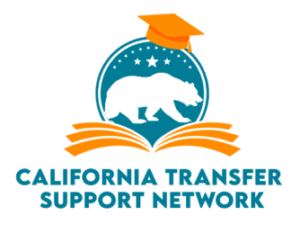Introduction
It is widely understood that the United States community college system is a diverse and multicultural system of higher education. Many students come from low-income backgrounds and represent a swatch of American society that is too often overlooked.
This blog post will examine one of those communities, mainly those students who request accommodations and need the support of a center for disability services.
Other students may not understand or comprehend the impact having a disability can have. Still, community colleges throughout California have complied with the hallmarks of the disabilities act and attempted to handle all accommodation requests that students submit.
What are Student Accommodations?
Accommodations are adjustments to how tasks are presented, allowing children with learning disabilities to complete the same assignments as other students.
This does not mean that the content of the assignments is changed, but it does make it possible for students with LD to show what they know without being hindered by their disability.
Some people assume that students with an LD are given an unfair advantage when taking assignments and how they are graded in relation to other students.
Recommended Reading: How Transfer Students Contribute to University Culture
This is entirely unfounded, as accommodations merely grant students with a learning disability the ability to show their potential without being disenfranchised by their disability.
Some common accommodations include providing extra time to complete assignments, breaking tasks into smaller parts, or giving oral instructions instead of written ones. Accommodations should be tailored to meet the specific needs of each student.
Related: When do UC Decisions Come Out? 2023 UC Decision Date
Why are Student Accommodations Necessary?
Learning accommodations are necessary in order for children and adults with disabilities to have an opportunity to demonstrate what they know.
Without accommodations, these students would be disadvantaged when completing assignments and assessments. Some common accommodations include extended time, special lighting, modified assignments, and preferential seating.

Legislation Protecting Students with Disabilities
In the United States, students with disabilities are protected by a number of laws, including the Individuals with Disabilities Education Act (IDEA) and the Americans with Disabilities Act (ADA).
These laws give students with disabilities the right to a free and appropriate public education and protection against discrimination.
Americans with Disabilities Act (ADA) & (IDEA)
The IDEA requires that schools provide students with disabilities with individualized education programs (IEPs) designed to meet their unique needs.
A child’s IEP is a support program encompassing the child’s parents in decisions over which accommodations are necessary for their child.
Further, the Rehabilitation Act of 1973 prohibits organizations and employers from excluding or denying individuals with disabilities an equal opportunity to receive program benefits and services.
Section 504 of the Rehabilitation Act, in conjunction with the previous two pieces of legislation, promotes special education and support for students with LD. They are laws that define the rights of individuals with disabilities to participate in and access program benefits and services.

The IDEA requires that schools provide students with disabilities with individualized education programs (IEPs) designed to meet their unique needs.
A child’s IEP is a support program encompassing the child’s parents in decisions over which accommodations are necessary for their child.
The development of an IEP should be in consultation with the student’s IEP team and incorporate the advice and testimony of the parents involved.
Read Our Post: Is Withdrawing From a Class Bad? | “W” on Transcript
Under the Americans with Disabilities Act, students with disabilities must be given reasonable accommodations in order to participate fully in school.
These laws have helped improve access to education for students with disabilities and ensure they can receive the support they need to succeed. However, there is still more work to be done in order to fully inclusive all students.
For example, the IDEA does not cover all types of disabilities, and some students with disabilities still face significant barriers to accessing quality special education.
Nonetheless, enacting these laws has been an important step in ensuring that all students have the opportunity to reach their full potential.
Related Reading: AB 705 Pros and Cons | Addressing the Issue of Remedial Courses
Different Types of Student Accommodations
There are many different accommodations that can be given to students with LD to level the playing field.
Some common accommodations include providing extra time to complete assignments, breaking tasks into smaller parts, or giving oral instructions instead of written ones.
Accommodations should be tailored to meet the specific needs of each student.
For a more technical stance, the main types of accommodations we see today are:
- Timing Accommodations
- Scheduling Accommodations
- Setting Accommodations
- Presentation Accommodations
Timing Accommodations
Accommodations concerning timing are exactly what it sounds like: they are accommodations meant to provide students with extended time.
Extended time can be utilized for any matter of classroom curriculum and instruction, including assignments, tests, programs, or whatever else the students need support for. This allows students to work at their own pace and not feel rushed.

For example, a student may receive extra time on test questions or support from a calculator or word processor while taking the exam.
Scheduling Accommodations
Another type of learning accommodation is scheduling accommodations. Similar to timing accommodations, and often in conjunction with one another, student accommodations with a scheduling component can take more time to complete a test, project, or assignment.
They are allowed to take frequent breaks and break apart the assignments into several days to be performed in a different order and at a specific time.
Scheduling student accommodations can be very beneficial for students who struggle with time management or have difficulty completing tasks within a certain timeframe.
These types of student accommodations can be spread out across the school work and throughout several times sessions. These student accommodations are examples of instances where accommodations for community college students might differ.
Often, breaking an assignment into smaller parts or taking more time to complete it can be the difference between a student passing and failing. Additionally, allowing students to take frequent breaks can help them to stay focused and on task.
Setting Accommodations
Another accommodation for students pertains to their setting or learning environment. These are requests pertaining to a student’s learning environment or the way in which they engage with the material provided.
This can include accommodations such as preferential seating, special lighting, and acoustics or being in a space with minimal distractions.
Additionally, accommodations for community college students may also be made in regard to the way that tests are administered. This might mean giving them a small group setting for testing or having them take the test privately in a quiet room or alternative test site.
Overall, setting accommodations for students are intended to help them better engage with the material and learn in a way that works best for them.
Presentation Accommodations
Lastly, presentation accommodations refer to the way in which class material is presented to a student with an LD.
This can include providing the material on audio tape, in large print, or with braille, as well as having a reader present or giving oral instruction.
These accommodations help students understand and learn the course material, regardless of their learning disability. Ultimately, they allow students to thrive in their studies and succeed in their academic pursuits.
By accommodating the way in which the material is presented, teachers can help ensure that all students have an opportunity to learn.
All student accommodations have to be presented in accordance with the policy and procedure of the school. A student with a disability
Supporting Modifications to Address Student Accommodation
One of the teachers’ most important accommodations for students with learning disabilities is modifying the classwork and curriculum.
By modifying the assignments and material, teachers can ensure that all students have equal opportunities to learn and succeed. When classwork is modified, it is often made simpler or more concise so students are not overwhelmed by the material.
In addition, accommodations can be made for students who have difficulty with tasks such as writing or taking tests. Teachers can help level the playing field for all students by making these accommodations. As a result, all students have a better chance of succeeding in school.
How to Request Student Accommodations
If you are a student with a learning disability, it is important to request accommodations as soon as possible. Informing your institution early about your learning disability will enable staff to identify services that can be implemented before you visit a class.
Staff can better manage services and accommodate student disabilities if they understand the support services the student will need while at school.
To begin, you will need to provide documentation of your disability to the Disability Services office. This documentation can be from a doctor, therapist, or other qualified professional.
Once you have provided your documentation, the Disability Services staff will work with you to create an accommodation plan.
Your accommodation plan may include extended time on tests, note-taking assistance, or extra breaks. It is important to remember that accommodations are not a guarantee for success but can help level the playing field.
If you are interested in requesting accommodations, please contact the Disability Services office at your school. They will be able to help you get started.
What is the Center for Disability Services?
Although not every institution refers to their disability support services as the “Center for Disability Services,” all learning institutions have some sort of building, office, or a department dedicated to students with learning disabilities.
For example, San Diego City College has its Disability Support Programs & Services (DSPS), which has a host of counselors authorized to provide individualized accommodations for students.
Accommodation requests can include the following:
- Extended Time on Exams
- Personal Note-Taker
- Test-Taking Strategy Support
- Lecture Recordings
Conclusion
Community college disability services strive to provide a level of academic support for students with diagnosed learning disabilities. The accommodations offered can be very beneficial in assisting these students to reach their fullest potential in the classroom.
Common accommodations include extended time for tests and assignments, note-takers, and a quiet testing environment. If you feel you may have a learning disability, it is important to speak with your instructor and contact the disability services office on campus as soon as possible. They can help you determine what accommodations would be appropriate for you and help you get started on receiving the support you need.




